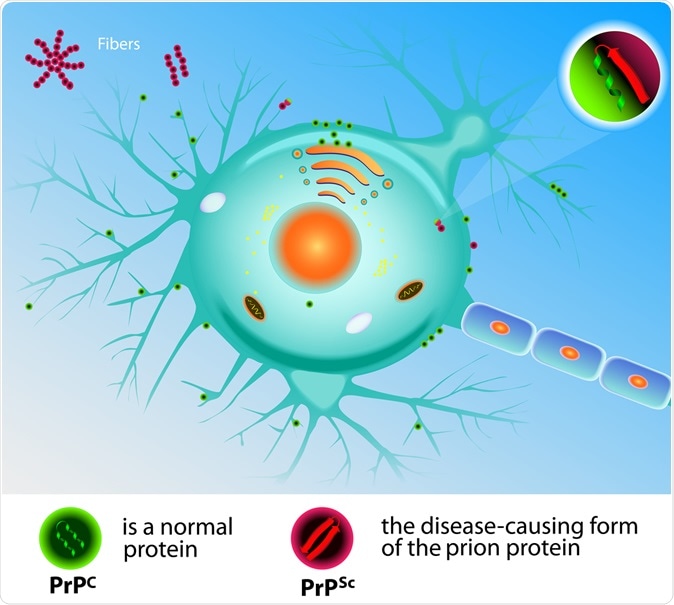A recent study has found that prion proteins that cause a deadly brain disease may enter the body via the eyes.
Researchers at the National Institute of Allergy and Infectious Diseases, the University of California at San Diego and UC-San Francisco could also detect prion protein infection by looking at the eyes, the study shows.
The results of the study titled, “Prion Seeds Distribute throughout the Eyes of Sporadic Creutzfeldt-Jakob Disease Patients,” were published this week in the latest issue of the journal mBio.

Prion Theory. Mad Cow Disease Prions. Image Credit: Designua / Shutterstock
Prion proteins are small bits of proteins that are responsible for causing sporadic Creutzfeldt-Jakob disease (sCJD) that is rare and affects one in a million individuals worldwide annually. CJD is related to “mad cow disease”. There is not effective cure for this condition. It is almost always fatal to the victim. In this disease the proteins in the brain fold incorrectly. These prion proteins can cause brain proteins to be altered and cause lesions in the brain. Consumption of infected brain matter of animals has been known to transmit this infection.
This new study shows that prion proteins can also spread via eye surgeries. They can be transmitted via infected medical equipment says the new study. The team tested the eyes of 11 patients who had died of CJD and noted that their eyes had abundant amounts of prions. These prion “seeds” were mainly found in the retinas of the patients. They were also noted in other parts of the eyes such as the lens, ocular fluid, choroid, cornea, sclera, optic nerves and eye muscles.
Christina J. Sigurdson, DVM, Ph.D., professor of pathology at the University of California (UC) San Diego and UC Davis said, “Almost half of sCJD patients develop visual disturbances, and we know that the disease can be unknowingly transmitted through corneal graft transplantation...But distribution and levels of prions in the eye were unknown. We’ve answered some of these questions.
Our findings have implications for both estimating the risk of sCJD transmission and for development of diagnostic tests for prion diseases before symptoms become apparent.”
At present the disease may be difficult to detect. Researchers hope that this finding could pave the way to detection of the disease in the patient’s eye. The researchers would now test if the eye secretions carried prions. This would mean that the disease could spread when tears come in contact.